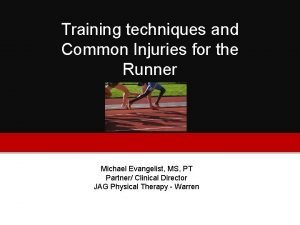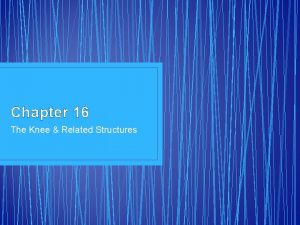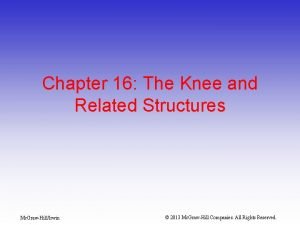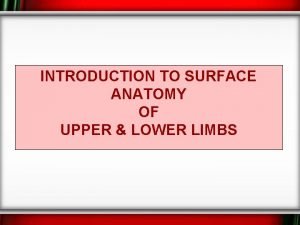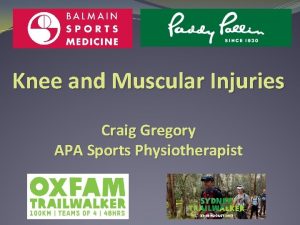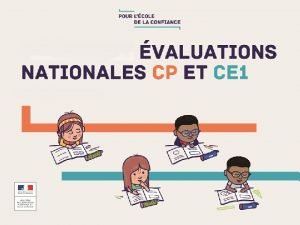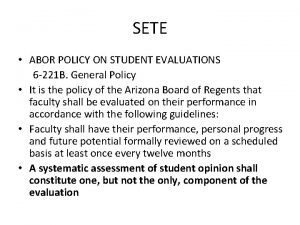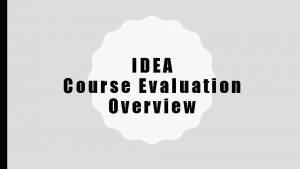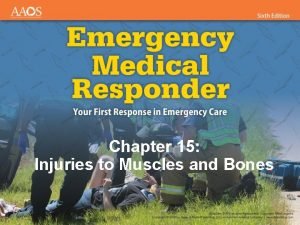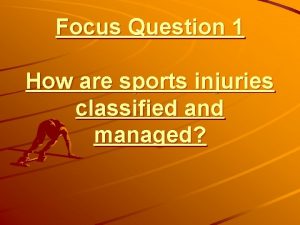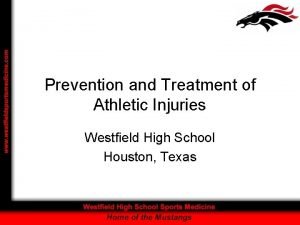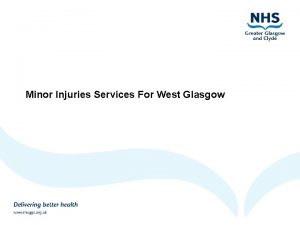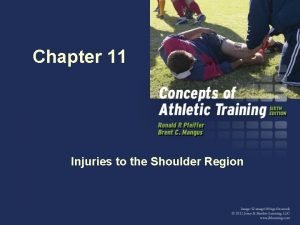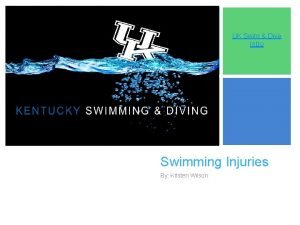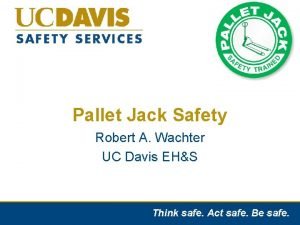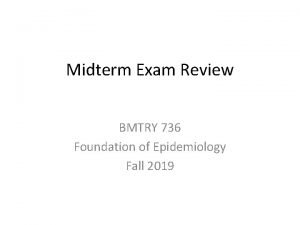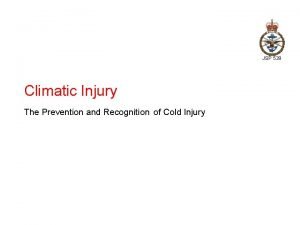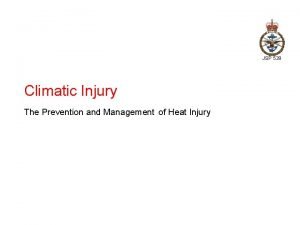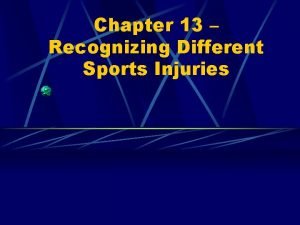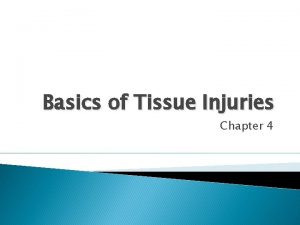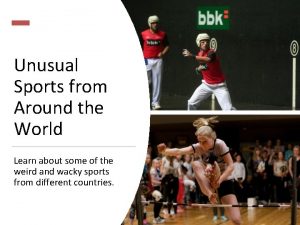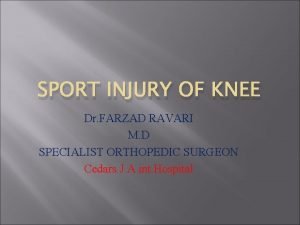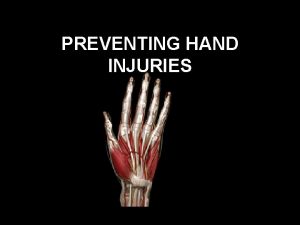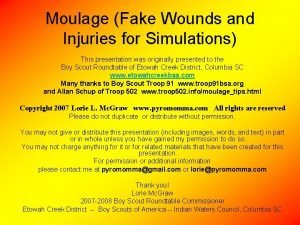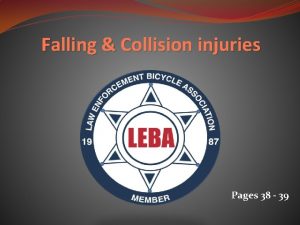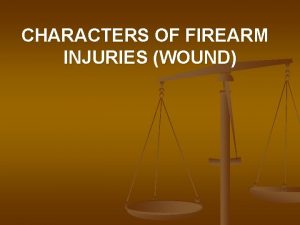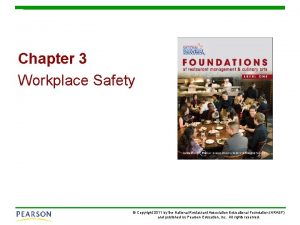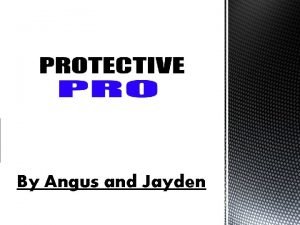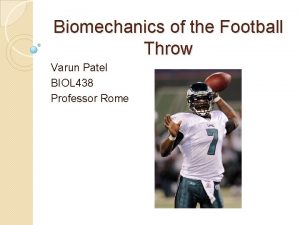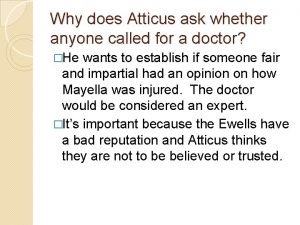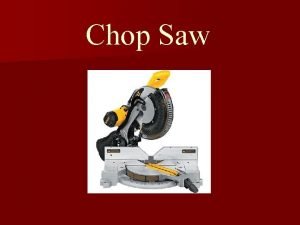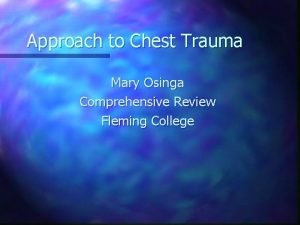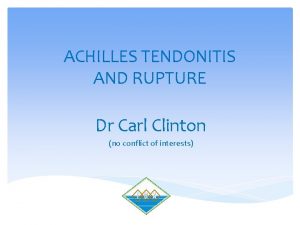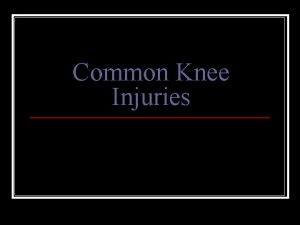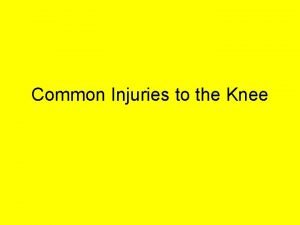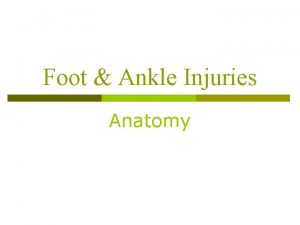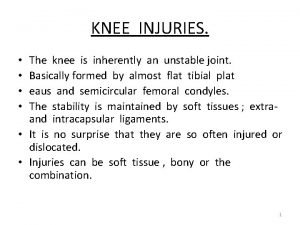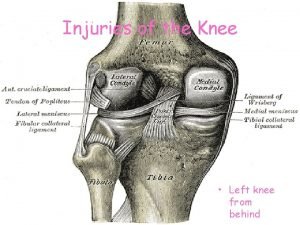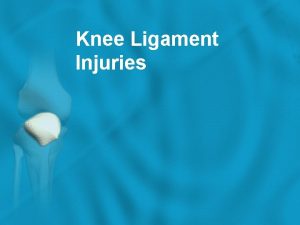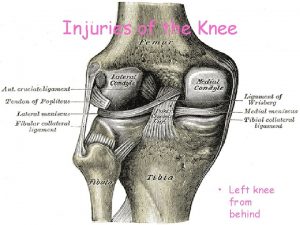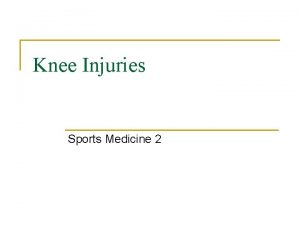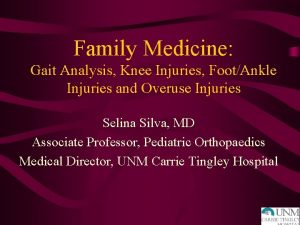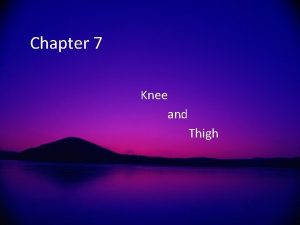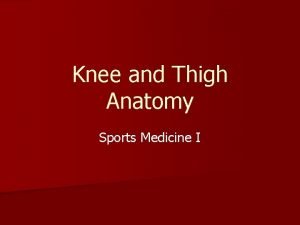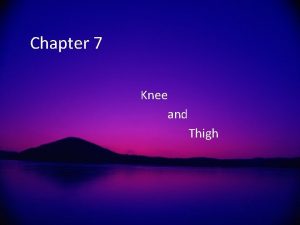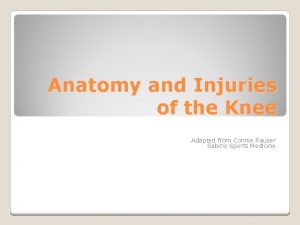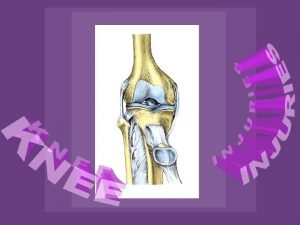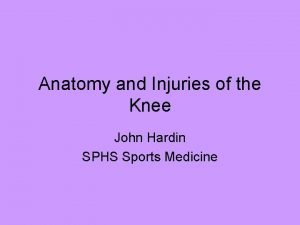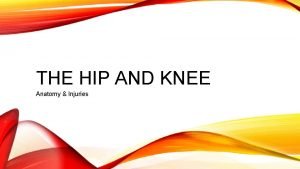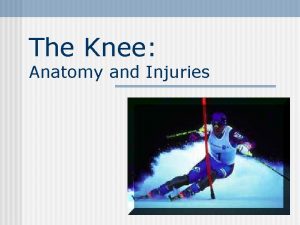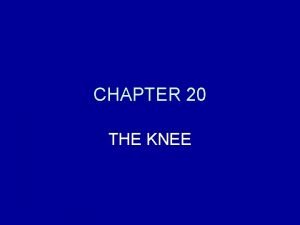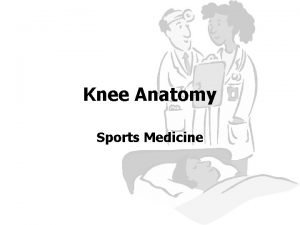KNEE EVALUATIONS Anatomy and common injuries The Knee


































































- Slides: 66

KNEE EVALUATIONS Anatomy and common injuries

The Knee Joint n Knee joint proper (tibiofemoral joint) ¡ Primarily classified as a ginglymus (hinge) joint n n n Patellofemoral joint ¡ n n n Sometimes referred to as trochoginglymus (pivotal, screw) joint internal & external rotation occur during flexion Some argue for condyloid (ellipsoid, ovoid)classification arthrodial (gliding) classification (patella on femoral condyles) Femoral condyles articulate with tibial plateaus Tibia - bears most of the weight Fibula – attachment for muscles & ligaments

The Knee Joint n Extends to 180º ¡ n n Hyperextension normal Flexes to 140º With knee flexed 30º or > ¡ ¡ internal rotation 30º occurs external rotation 45º occurs

The Patella n n n Sesamoid bone Imbedded in quadriceps & patella tendon Serves similar to a pulley for improving angle of pull (results in greater mechanical advantage in knee extension)

Surface Anatomy n n n Patella (A) Femur (B) Tibia (C, E – tuberosity) Joint Line (D) Fibula (F) Gerdy’s Tubercle

Internal Knee Anatomy

Internal Knee Anatomy n n n Medial Meniscus Lateral Meniscus Anterior Cruciate Ligament Posterior Cruciate Ligament Articular Cartilage

Ligamentous Anatomy • • Hinged Joint ACL: Ant Stability PCL: Post Stability Lat/Med Stability: LCL/MCL • Menisci: Medial/Lateral

Menisci

Cruciate Ligament Movement

Bursae & Fat Pad of the Knee

Anatomy – Soft Tissue n Quadriceps – ¡ ¡ n Rectus femoris Vastus lateralis Vastus intermedius Vastus medialis (& oblique - VMO) Hamstrings – ¡ Biceps femoris n ¡ ¡ Semitendinosus Semimembranosus n n Inserts primarily on fibula head Inserts posteromedially on medial tibial condyle Popliteal fossa

Muscles n n n Gracilis, Sartorius & Semitendinosus ¡ Common attachment n n n Pes Anscerine Iliotibial Band Gastrocnemius heads – lateral & medial

EXTENSOR MECHANISM ORIGINS: The • Rectus Femoris: AIIS Quadriceps • Vastus Group: Linea Aspera INSERTIONS: • Patellar Retinaculum

FLEXOR MECHANISM The Hamstring COMMON ORIGIN: • Ischial Tuberosity INSERTIONS: • Biceps: Fibular Head • Semimembranosus: Medial Tibial Condyle • Semitendinosus: Pes Anserinus

Nerves n n n Femoral Nerve (L 2, 3, 4) ¡ innervates the knee extensors (quadriceps) ¡ Anterior cutaneous branches of femoral n. Lateral femoral cutaneous N. Saphenous N. – infrapatellar branch

Nerves n Sciatic ¡ tibial division n ¡ semitendinosus, semimembranosus, biceps femoris (long head) common peroneal (fibular) division n biceps femoris (short head)

Vascular Anatomy Femoral Artery & Vein Great Saphenous Vein (medial) Lesser Saphenous Vein (posterior) Popliteal Artery & Vein

Knee Movements

Screw Home Mechanism n Locking mechanism as the knee nears its final extension degrees ¡ n Automatic rotation of the tibia externally (approx. 10 degrees) during the last 20 degrees of knee extension Femoral condyles are a different size ¡ Medial has larger surface area n The tibia glides anteriorly on the femur. As knee extends, the lateral femoral condyle expends its articular distance. The medial articulation continues to glide, resulting in external rotation of the tibia utilizing the lateral meniscus as the pivot point. n ACL & PCL are rotary guides

History n MOI ¡ n n n Position of lower extremity at time of injury (? foot planted, knee extended) Previous history Pain (levels, types, descriptors) Unusual sounds/sensations “pop, clicking, snapping” Chronic vs. acute Location of pain “inside the knee” Surface Shoes Type of activity at time of injury Painful to walk up/down stairs; any clicking, catching Did it swell immediately, slowly? Is the swelling located in the knee or in a pocket?

Observation n n n Bilateral comparison Gait (limp, walking on toes, do they not want to extend knee, do they keep the knee stiff) Swelling (girth measurements) Discoloration Deformity (squinting patellae, “Frog-eyed” patellae, Patella alta, Patella baja) Genu valgum, genu varum, recurvatum Musculature – defined/mushy

Q-angle n The quadriceps angle (Q-angle) is the angle formed between a line drawn through the tibial tuberosity and the center of the patella and another line drawn from the anterior superior iliac spine (ASIS) of the pelvis through the center of the patella.

Quadriceps Angle (Q Angle) = The Angle between: 1) ASIS to center of Patella and 2) Patella to Tibial Tubercle NORMAL Men <10° Women <15°

Q-angle n Knee in extension ¡ ¡ n Normal – males 13 degrees Normal - females – 18 degrees Knee in 90 degrees flexion ¡ Both genders – 8 degrees


Palpation n n n n Tibia – tibial plateau, tibial tuberosity, Gerdy’s Tubercle Fibula – head Medial joint line Medial collateral ligament Lateral joint line Lateral collateral ligament “Windows” Medial & Lateral femoral condyles & epicondyles n n n n n Pes anserine tendon Semitendinosus tendon Patella – inferior pole Patellar tendon Quadriceps muscle group Biceps femoris tendon Iliotibial band Popliteal fossa Gastrocnemius heads

Range Of Motion

Stress/Special Tests n On-field vs. Off-field eval ¡ ¡ ¡ Check for fractures, blood, deformities, neurological Valgus Stress Test – MCL Varus Stress Test - LCL Lachman’s – ACL Anterior Drawer – ACL Mc. Murray’s - meniscus

Stress/Special Tests n Check for swelling ¡ n n Check ROM Ely’s Test Check integrity of ligaments & joint stability ¡ n Valgus, Varus, Lachman’s, Anterior/Posterior Drawer, Godfrey’s 90 -90 Test, Posterior Sag Test, Crossover Test, Slocum Drawer Test, External Rotation Test, Pivot Shift Check integrity of meniscus ¡ n Sweep Test, Ballotable Patella Mc. Murray’s, Apley’s Compression/Distraction, Duck Walk, Bounce home Check integrity of patella ¡ Patellar Apprehension, Q Angle, Clarke’s Sign, Patellar glide, tilt, rotation n Check integrity of Iliotibial Band ¡ Ober’s Test, Noble’s Compression Test

Now What? n n n ? Crutches ? Referral ? RICE

Osgood-Schlatter’s Disease

Osgood-Schlatter’s Disease Clinical Features n History ¡ ¡ n Exam ¡ ¡ n young athlete complains of painful enlargement of the tibial tuberosity pain worse with activity, esp. run/jump tender tibial tuberosity tight quads +/- hamstrings Imaging: usually not necessary

Osgood-Schlatter’s Disease Imaging n n n Use in severe or persistent cases to rule out other problems Not used to make the diagnosis in most cases May show fragmentation of the anterior tibial tuberosity

Osgood-Schlatter’s Disease Treatment n n n Relative rest; cross-training Ice Hamstring stretching Strapping of patellar tendon Rare: temporary immobilization Return to play: ¡ Pain-free with sports activity

Osgood Schlatter’s Disease Surgery Indications n Persistent, painful os after growth complete

Housemaid’s knee

Joint Stability Testing n n n MCL: Valgus Load LCL: Varus Load ACL: Lachman, Ant drawer, Pivot Shift n n PCL: Posterior Drawer, Sag sign, Quadriceps Active Postero-lateral complex: Ext Rot

MCL Stability Apply Valgus or Medial Stress Test in 30° flexion LCL Stability Apply Varus or Lateral Stress


Grading collateral ligament injuries n n Grade I: mild; no laxity Grade II: partial tear; laxity w/ firm endpoint Grade III: complete tear; laxity w/o firm endpoint Why does it matter? Prognosis

Treatment of MCL/LCL injuries n Grades I-II ¡ ¡ n knee immobilizer until pain gone ROM/strength ex’s as pain allows Grade III: ¡ ¡ r/o associated injuries knee immobilizer at 30° NWB 3 weeks knee immob 30 -80 ° NWB 4 wks progressive ROM/strength ex’s

ACL anatomy



Tests of ACL At 90° Flexion + is increased translation or soft end point At 20 -30 ° Flexion (more sensitive)

Pivot Shift: ACL Injury 1. Knee extended 4. Flex Knee 2. Internally rotate tibia 5. At 20 -30°, if you feel a jerk at Ant/Lat proximal tibia, test + 3. Apply valgus load

Management of ACL tears n n PRICEMM ROM/strength ex’s as pain allows MRI Referral to Orthopedics ¡ ¡ Surgery once edema gone Graft options n n n Bone-patella-bone autograft Hamstring autograft Cadaver allograft

PCL Tear

PCL TESTS: Posterior Sag Quad Active Test Posterior Drawer

Management of PCL tears n n Immobilize; refer to Ortho If no associated injuries: ¡ n ROM /strength ex’s as pain allows If associated with other injuries: ¡ Surgical repair n n MCL Postero-lateral corner

Popliteus Tendonitis n n n Function: resists posterior translation of tibia Pain postero-lateral Garrick Test: pain with resisted ext rotation of leg Seen w/ downhill running Treatment: ¡ ¡ ¡ Modify running NSAID/ice Hamstring stretching Eccentric quad strength Refer for injection if not responding Popliteus

Flexibility testing n Inflexeruse ¡ Hamstring ¡ Quadriceps ¡ Ilio-tibial band (ITB) ¡ Gastro-soleus complex ¡ Patellar glide and tilt

Quadriceps flexibility

Hamstring flexibility: Popliteal Angle Goal: 0°

Gastro-soleus flexibility

ITB flexibility: Ober test • Tight ITB will remain Abducted • Pain = ITB injury

Ilio-Tibial Band Friction Syndrome

Management of ITB Friction Syndrome n n n Reduce run mileage/hills/banked surfaces NSAID/ice massage/phonopheresis ITB stretching Correct overpronation Gradual return-to-running program Referral for injection if fail above

Miscellaneous Tests n n Mc. Murray: Meniscal injury Apley Test: Meniscal vs ligament injury Bounce Home Test: meniscal injury, effusion Patellar grind test: PFS, chondromalacia

Normal Meniscus Meniscal Tear

Mc. Murray Test MEDIAL MENISCUS: n Flex knee maximally n Externally rotate tibia n Varus stress n Extend Knee LATERAL MENISCUS: • Flex knee • Internally rotate tibia • Valgus stress • Extend knee + is painful pop over Medial or Lateral Joint Line

Mc. Murray Test

Apley test Compression for Meniscal Injury Distraction for Ligamentous Injury

Full Flexion Test Pain at full flexion suggestive of posterior horn tear

Management of Meniscal Tears n n Weight-bearing as tolerated ROM/strength ex’s as pain allows MRI to confirm if recovery not prompt Indications for referral: ¡ ¡ Elite athletes Symptomatic after 3 months Locking Unable to fully extend knee
 Common track injuries
Common track injuries Knee anatomy chapter 16 worksheet 1
Knee anatomy chapter 16 worksheet 1 Knee anatomy chapter 16 worksheet 1 answer key
Knee anatomy chapter 16 worksheet 1 answer key Knee surface anatomy palpation
Knee surface anatomy palpation Knee muscle anatomy
Knee muscle anatomy Susilo business center
Susilo business center Restitution évaluations nationales cp
Restitution évaluations nationales cp Nau course evaluations
Nau course evaluations Pharmacoeconomic evaluations amcp
Pharmacoeconomic evaluations amcp Non-discriminatory evaluation
Non-discriminatory evaluation Idea course evaluations
Idea course evaluations Shsu idea evaluations
Shsu idea evaluations Unit 15:10 providing first aid for specific injuries
Unit 15:10 providing first aid for specific injuries Chapter 28 head and spine injuries
Chapter 28 head and spine injuries Chapter 21 caring for head and spine injuries
Chapter 21 caring for head and spine injuries Injuries to muscles and bones chapter 15
Injuries to muscles and bones chapter 15 Chapter 14:1 using body mechanics
Chapter 14:1 using body mechanics Chapter 14 bleeding shock and soft tissue injuries
Chapter 14 bleeding shock and soft tissue injuries Chapter 13:2 preventing accidents and injuries
Chapter 13:2 preventing accidents and injuries Chapter 11 assessment and evaluation of sports injuries
Chapter 11 assessment and evaluation of sports injuries Chapter 12 lesson 1 benefits of physical activity
Chapter 12 lesson 1 benefits of physical activity How are sports injuries classified and managed
How are sports injuries classified and managed Lowest common denominator and greatest common factor
Lowest common denominator and greatest common factor Common anode and common cathode
Common anode and common cathode Gcf of 48 56 and 72
Gcf of 48 56 and 72 How to find lowest common factor
How to find lowest common factor Lcm of 10 and 18
Lcm of 10 and 18 Highest common factors and lowest common multiples
Highest common factors and lowest common multiples Beck weathers
Beck weathers What is katniss’ opinion of thresh?
What is katniss’ opinion of thresh? Strickler spine and sport
Strickler spine and sport Westfield sports injuries
Westfield sports injuries Yorkhill minor injuries
Yorkhill minor injuries Aims for first aid
Aims for first aid 17.10 providing first aid for specific injuries
17.10 providing first aid for specific injuries Chapter 11 injuries to the shoulder region
Chapter 11 injuries to the shoulder region Kristen wilson injuries
Kristen wilson injuries Uc davis web scheduler
Uc davis web scheduler The cause-specific mortality rate from roller-skating was:
The cause-specific mortality rate from roller-skating was: Jsp539
Jsp539 Climatic injuries
Climatic injuries Chapter 4 preventing injuries through fitness
Chapter 4 preventing injuries through fitness Chapter 13 worksheet recognizing different sports injuries
Chapter 13 worksheet recognizing different sports injuries Chapter 4 basics of tissue injuries
Chapter 4 basics of tissue injuries Bo taoshi injuries
Bo taoshi injuries Miniscal
Miniscal Preventing hand injuries
Preventing hand injuries Intentional injury and unintentional injury
Intentional injury and unintentional injury How to make fake skin with gelatin
How to make fake skin with gelatin Examples of intentional fallacy
Examples of intentional fallacy Injury prevention, safety and first aid
Injury prevention, safety and first aid Pa wc bureau
Pa wc bureau Injuries first aid
Injuries first aid Characters of firearm injuries
Characters of firearm injuries Which osha document summarizes occupational injuries
Which osha document summarizes occupational injuries Sports injuries angus, on
Sports injuries angus, on Biomechanics throwing football
Biomechanics throwing football Where do the ewells live
Where do the ewells live How do they suppose that haymitch won the games?
How do they suppose that haymitch won the games? Chop saw injuries
Chop saw injuries Deadly dozen trauma
Deadly dozen trauma Carl clinton
Carl clinton Hát kết hợp bộ gõ cơ thể
Hát kết hợp bộ gõ cơ thể Lp html
Lp html Bổ thể
Bổ thể Tỉ lệ cơ thể trẻ em
Tỉ lệ cơ thể trẻ em Gấu đi như thế nào
Gấu đi như thế nào
